У чому загадка карельської берези – таємничої перлини північних лісів
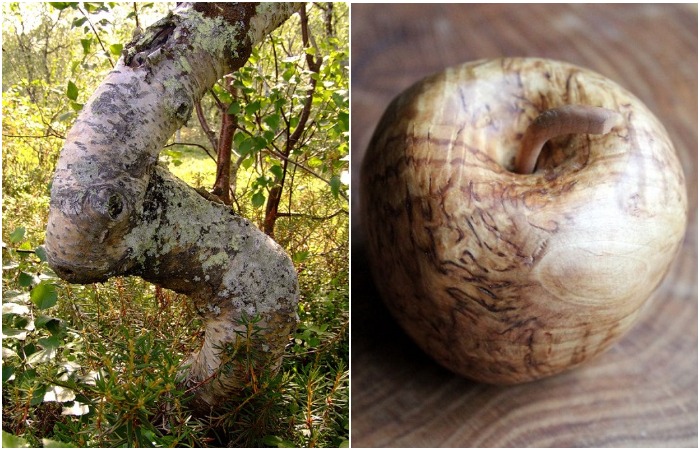
Відомо, що ідеальною вважається деревина у тих дерев, які мають рівні, без вад, стовбури. Карельська береза зовсім не вписується в існуючі канони, але є однією з найцінніших деревних порід. Саме в вадах і криється її справжня краса – незвичайна мармурова текстура, над розгадкою якої вчені б'ються майже сотню років.
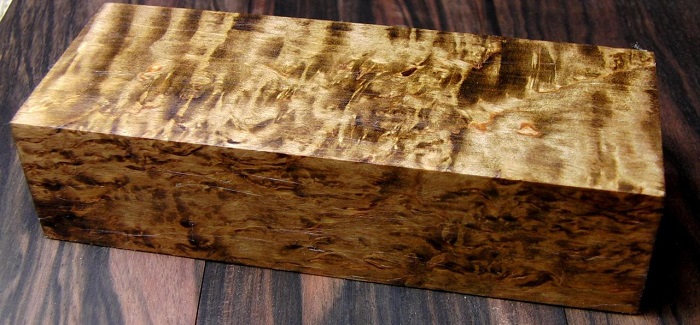
У 1766 році німецький лісничий Фокель, який досліджував за дорученням Катерини II лісу північно-західної частини Росії, виявив і вперше описав незвичайні дерева, що зустрічаються там, які на вигляд нагадували просту березу, а «начинкою були схожі на мармур». Майже через сто років (1857 року) російський учений К.Мерклін дав цим деревам назву «карельська береза», оскільки вперше їх виявили саме в Карелії. Крім російської, карельська береза отримала і латинську назву – Betula pendula Roth.
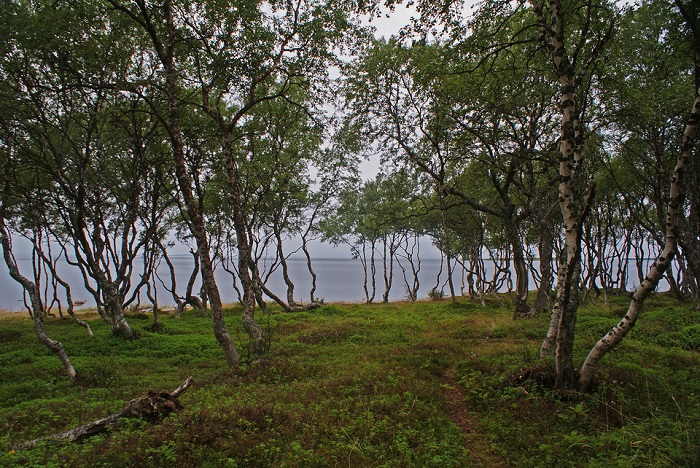
На відміну від звичної нам стрункої білоствольної берези, оспіваної багатьма поетами та художниками, цю березу навряд чи хтось назве красунею. Карельська береза є абсолютно непривабливим низькоросле деревце з сильно деформованим стволом з великою кількістю кулястих здуття і бугрів на ньому.
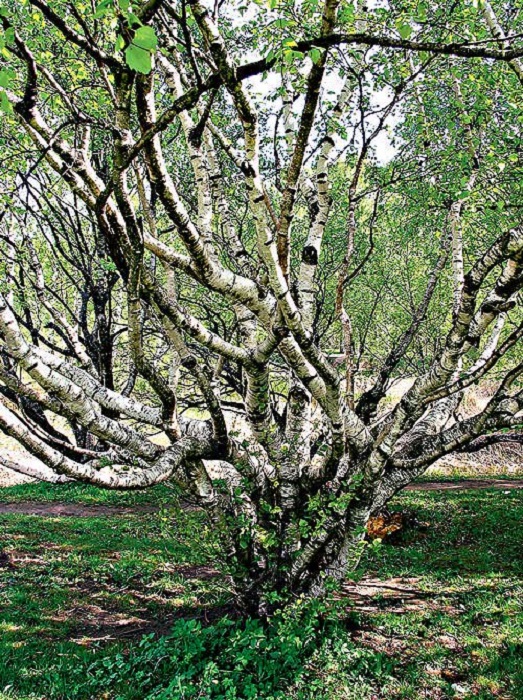
Але під цією непоказною оболонкою приховано справжній скарб. Саме потворні нарости та тріщини на стовбурі карельської берези формують замість річних кілець, які можна побачити на зрізах інших дерев, незвичайний малюнок із химерних ліній, завитків, галочок. Причому малюнок цей на кожному стовбурі унікальний.

Спил карельської берези
Дуже красивий і колір деревини, який може бути різних відтінків - від світло-золотистого до темно-бурштинового. Відполірована, вона переливається, подібно до перламутру.
До того ж, деревина біля карельської берези ще й дуже міцна – вона не гниє та не розколюється.

З кінця 18 століття деревина карельської берези йшла на виготовлення дорогих меблів, посуду, скриньок, прикрас. Карельську березу почали називати "царським деревом", меблями з унікальної деревини обставляли інтер'єри царських палат.
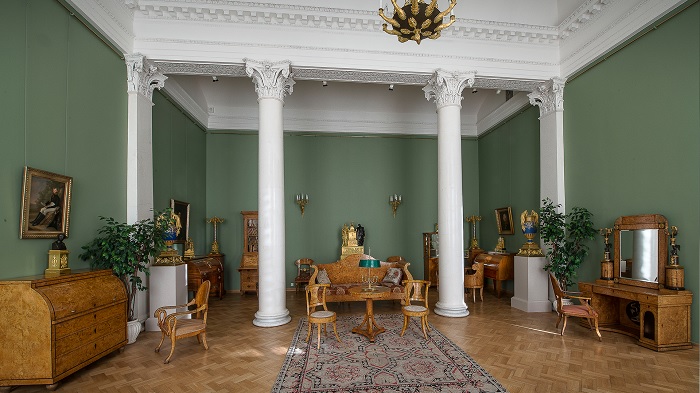
Зал меблів із карельської берези. Ермітаж

Комплект мебели из карельской березы. Эрмитаж
В 1917 году Фаберже изготовил из карельской березы для императора Николая II пасхальное яйцо. Долгое время этот шедевр считали утерянным, но сейчас на него можно полюбоваться в Музее Фаберже в Баден-Бадене (Германия).
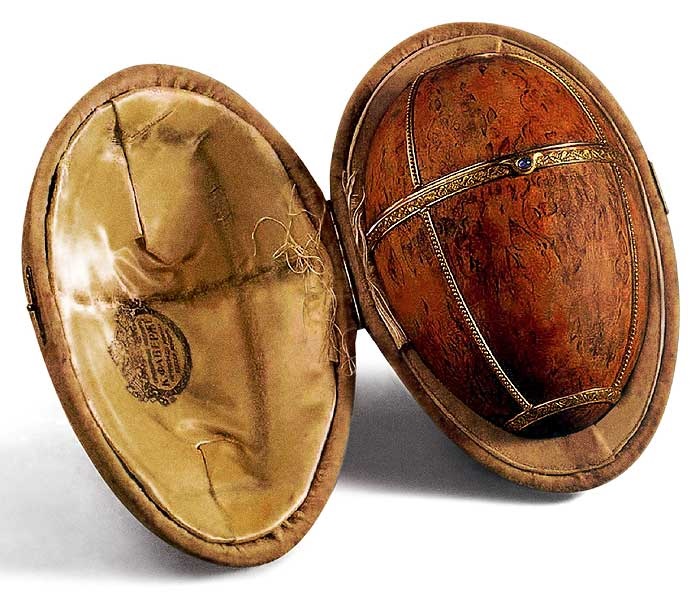
Яйце Фаберже з карельської берези, інкрустоване золотом
Дерево-загадка
Ось уже майже 100 років вчені б'ються над загадками цього дерева. Спочатку навіть було незрозуміло, що являє собою карельська береза – чи це окремий вид, чи просто різновид, підвид якогось виду берези. Це питання, зрештою, прояснили – більшість дослідників зійшлися на тому, що карельська береза є аномальною формою, підвидом, найпоширенішою у нас березою – повислою (або бородавчастою).

Але, як і раніше, немає однозначної думки щодо причини, що призводить до такої незвичайної форми стовбура берези і, відповідно, до утворення візерункової деревини. Висувається безліч різних гіпотез - вплив складу грунту, клімату, вірусні хвороби, генетичні мутації і т. д. Так що дослідження тривають.
На початку 20-го століття чисельність цих цінних дерев почала різко знижуватися через неконтрольовану вирубку, треба було вживати термінових заходів для порятунку карельської перлини. І починаючи з 30-х років карельську березу почали вирощувати у спеціальних заповідниках.
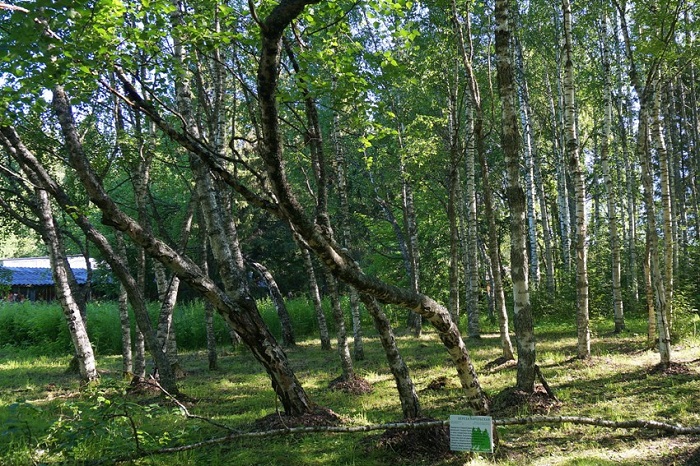
Державний заповідник "Ківач". Карельська береза
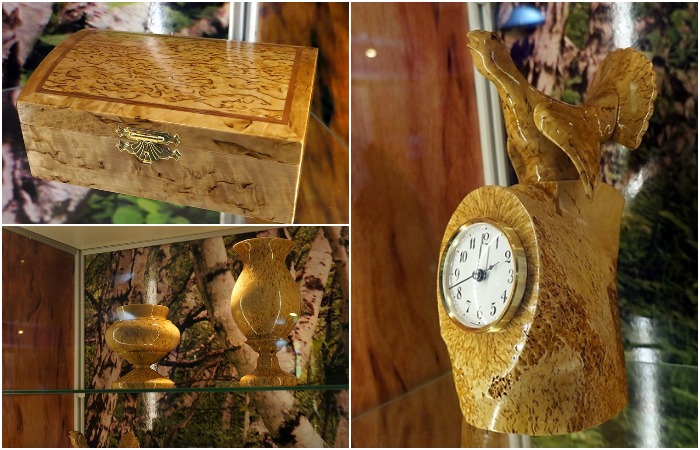
Вироби із карельської берези. Музей заповідника «Ківач»

